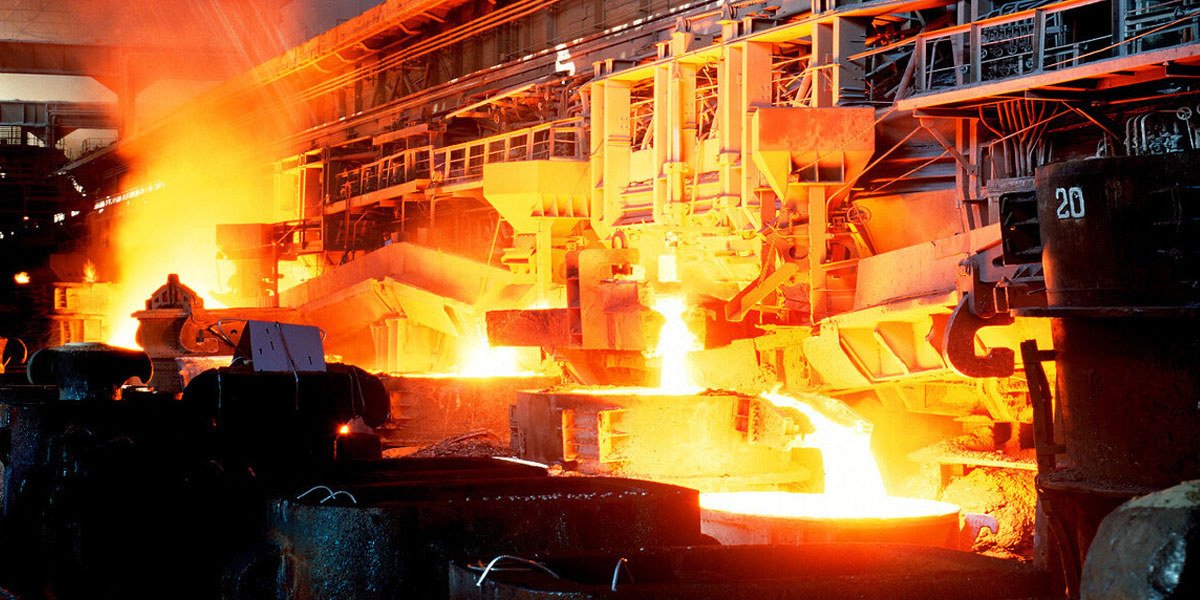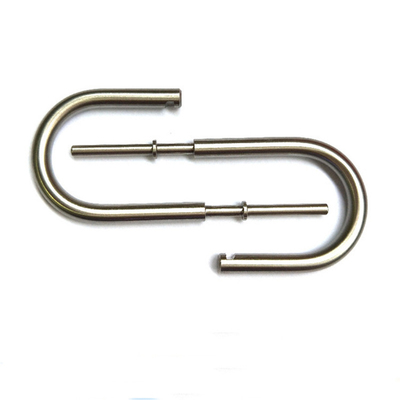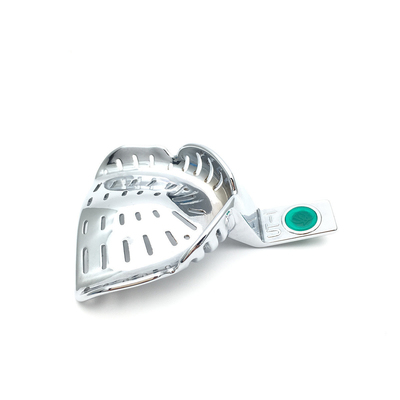Dust-Free Investment Material for Precision Casting: Preparation and Applications

Investment casting, also known as lost-wax casting, is a precision manufacturing process that has been utilized for over 5,000 years to produce intricate metal components with exceptional dimensional accuracy and surface finish. This technique involves creating a wax pattern, coating it with a refractory material to form a mold, melting out the wax, and pouring molten metal into the resulting cavity. The quality of the investment material—the refractory mold material—plays a critical role in determining the success of the casting process. Traditional investment materials, while effective, often generate dust during handling, mixing, and mold preparation, posing health risks, environmental concerns, and challenges to maintaining a clean production environment. Dust-free investment materials have emerged as a significant advancement in the field, addressing these issues while maintaining or enhancing the performance characteristics required for precision casting.
This article provides a comprehensive exploration of dust-free investment materials used in precision casting, focusing on their composition, preparation processes, properties, advantages, and applications. It also examines the challenges associated with their development and implementation, compares dust-free materials with traditional counterparts, and discusses future trends in this domain. The goal is to offer a detailed, scientifically grounded resource for researchers, engineers, and industry professionals seeking to understand and leverage dust-free investment materials in modern manufacturing.
Historical Context of Investment Casting and Investment Materials
Investment casting traces its origins to ancient civilizations, including Mesopotamia, Egypt, and China, where artisans used beeswax patterns to cast soft metals like gold and copper into jewelry, religious artifacts, and tools. The process evolved significantly during the Industrial Revolution and saw widespread adoption during World War II to meet the demand for precision components in aerospace and defense applications. The development of investment materials paralleled these advancements, transitioning from simple clay-based slurries to sophisticated refractory systems capable of withstanding high-temperature molten alloys.
Traditional investment materials typically consist of a refractory base (e.g., silica, zircon, or alumina), a binder (e.g., colloidal silica or ethyl silicate), and additives to control properties like viscosity, thermal expansion, and mold strength. However, these materials often produce fine particulate dust during mixing, handling, and mold breakdown, leading to respiratory hazards for workers, equipment contamination, and environmental pollution. The introduction of dust-free investment materials in the late 20th and early 21st centuries marked a pivotal shift, driven by advancements in material science, occupational health regulations, and the need for cleaner production processes.
Dust-free investment materials are engineered to minimize or eliminate airborne particulates through techniques such as granulation, pre-wetting, or encapsulation of fine powders. These materials maintain the high-performance characteristics required for precision casting while addressing safety and environmental concerns. The development of such materials reflects broader trends in manufacturing toward sustainability, worker safety, and process efficiency.
Composition of Dust-Free Investment Materials
Refractory Base Materials
The refractory base forms the structural backbone of investment materials, providing thermal stability and resistance to molten metal. Common refractories include:
-
Silica (SiO₂): Widely used due to its availability, low cost, and ability to form smooth mold surfaces. Fused silica is preferred for its low thermal expansion and high thermal shock resistance.
-
Zircon (ZrSiO₄): Offers superior refractoriness and chemical stability, making it ideal for casting high-melting-point alloys like superalloys.
-
Alumina (Al₂O₃): Used in applications requiring extreme thermal resistance, such as aerospace components.
-
Mullite (3Al₂O₃·2SiO₂): A composite refractory with balanced thermal and mechanical properties.
In dust-free formulations, these refractories are processed to reduce fine particle content, often through granulation or coating techniques that bind particles into larger, less volatile aggregates.
Binders
Binders hold the refractory particles together, forming a cohesive mold. Common binders include:
-
Colloidal Silica: A water-based suspension of silica particles that provides excellent mold strength and surface finish.
-
Ethyl Silicate: An alcohol-based binder that cures through hydrolysis, offering high green strength but requiring careful handling due to flammability.
-
Gypsum-Based Binders: Used in jewelry casting for their ease of use and ability to produce fine details.
-
Polymer-Modified Binders: Emerging in dust-free formulations, these incorporate polymers to enhance cohesion and reduce dust generation during mixing.
Dust-free binders are often pre-mixed or encapsulated to prevent the release of fine particles, improving safety and ease of handling.
Additives and Modifiers
Additives tailor the properties of investment materials to specific casting requirements. These include:
-
Wetting Agents: Reduce surface tension, improving slurry flow and mold coating uniformity.
-
Deflocculants: Prevent particle agglomeration, ensuring a smooth slurry consistency.
-
Anti-Foaming Agents: Minimize air entrapment during mixing, reducing mold defects.
-
Stabilizers: Enhance shelf life and prevent premature curing of the slurry.
In dust-free systems, additives are carefully selected to maintain performance while minimizing dust. For example, liquid or encapsulated additives replace powdered forms to reduce airborne particulates.
Dust Suppression Techniques
The hallmark of dust-free investment materials is their ability to minimize airborne particles. This is achieved through:
-
Granulation: Fine refractory powders are agglomerated into granules, reducing dust during handling and mixing.
-
Pre-Wetting: Powders are pre-mixed with liquid binders to form a damp, cohesive mixture that resists dust formation.
-
Encapsulation: Fine particles are coated with a thin polymer or binder layer, preventing them from becoming airborne.
-
Vacuum Packaging: Materials are sealed in airtight containers to prevent dust release during storage and transport.
These techniques ensure that dust-free investment materials meet stringent health and safety standards while maintaining the precision required for casting.
Preparation Process of Dust-Free Investment Materials
Raw Material Selection and Pre-Treatment
The preparation of dust-free investment materials begins with the careful selection of raw materials. Refractories must meet strict purity and particle size requirements to ensure consistent mold performance. For example, silica sands are screened to remove impurities, while zircon is milled to achieve a uniform particle size distribution. Pre-treatment steps include:
-
Washing: Removes contaminants like clay or organic matter from refractory grains.
-
Drying: Ensures consistent moisture content, critical for dust-free formulations.
-
Sieving: Controls particle size distribution, reducing the presence of fines that contribute to dust.
Granulation and Agglomeration
To achieve dust-free properties, fine refractory powders are granulated into larger particles. This process involves:
-
Mixing: Combining refractory powders with a liquid binder (e.g., colloidal silica or polymer solution) to form a slurry.
-
Spray Drying: The slurry is atomized into droplets and dried in a heated chamber, forming spherical granules with minimal fine particles.
-
Fluidized Bed Granulation: Powders are suspended in an air stream and coated with binder, creating uniform granules.
Granulated materials are less prone to dust generation and improve flowability during mold preparation.
Binder Preparation and Mixing
Binders are prepared separately to ensure homogeneity. For colloidal silica binders, silica particles are dispersed in water with stabilizers to prevent settling. Ethyl silicate binders require controlled hydrolysis to form a stable gel. Dust-free formulations often use pre-mixed liquid binders or encapsulated dry binders to eliminate dust during mixing. The mixing process involves:
-
High-Shear Mixing: Ensures uniform dispersion of refractory particles and additives in the binder.
-
Vacuum Mixing: Removes air bubbles, reducing porosity in the final mold.
-
Temperature Control: Maintains optimal viscosity and prevents premature curing.
Slurry Formation and Stabilization
The slurry, a mixture of refractory, binder, and additives, is the core of the investment material. Dust-free slurries are formulated to minimize fine particle content and maintain stability. Key steps include:
-
Batch Mixing: Combines granulated refractories with liquid binders in precise ratios.
-
pH Adjustment: Ensures colloidal silica binders remain stable (typically pH 9-10).
-
Viscosity Control: Adjusts slurry thickness to achieve uniform mold coating without dripping.
Mold Formation and Curing
The slurry is applied to wax patterns through dipping, spraying, or brushing. Dust-free materials reduce airborne particulates during this stage, improving worker safety. The mold formation process includes:
-
Primary Coating: A fine slurry layer is applied to capture intricate pattern details.
-
Backup Layers: Coarser slurry and stucco (dry refractory particles) are applied to build mold thickness.
-
Drying: Each layer is air-dried or dried in a controlled environment to prevent cracking.
-
Dewaxing: The wax pattern is melted out in an autoclave or furnace, leaving a hollow ceramic mold.
-
Firing: The mold is heated to 800-1000°C to cure the ceramic, enhancing strength and removing residual binder components.
Quality Control and Testing
Quality control is critical to ensure dust-free investment materials meet casting requirements. Tests include:
-
Particle Size Analysis: Verifies the absence of fine particles that cause dust.
-
Slurry Stability: Measures viscosity, pH, and sedimentation over time.
-
Mold Strength: Assesses green and fired strength to ensure mold integrity during casting.
-
Thermal Expansion: Evaluates dimensional stability at high temperatures.
-
Dust Emission Testing: Quantifies airborne particulates during handling and mixing.
Properties of Dust-Free Investment Materials
Physical and Mechanical Properties
Dust-free investment materials are designed to match or exceed the performance of traditional materials. Key properties include:
-
High Refractoriness: Withstands temperatures up to 1800°C, suitable for casting superalloys and stainless steel.
-
Low Thermal Expansion: Minimizes mold cracking and ensures dimensional accuracy.
-
High Green Strength: Allows molds to withstand handling and dewaxing without damage.
-
Smooth Surface Finish: Produces castings with minimal surface defects, reducing post-processing.
Dust Suppression Effectiveness
Dust-free materials significantly reduce airborne particulates, often achieving dust levels below 1 mg/m³ during handling, compared to 10-50 mg/m³ for traditional materials. This is measured using gravimetric dust sampling and complies with occupational exposure limits (e.g., OSHA PEL of 5 mg/m³ for respirable dust).
Chemical Stability
Dust-free investment materials resist chemical reactions with molten metals, ensuring mold integrity and casting quality. For example, zircon-based materials are highly stable against reactive alloys like titanium.
Environmental and Safety Benefits
By minimizing dust, these materials reduce respiratory risks, equipment contamination, and environmental pollution. They also comply with regulations like REACH and OSHA, making them suitable for modern, safety-conscious foundries.
Advantages of Dust-Free Investment Materials
Health and Safety
The primary advantage of dust-free investment materials is improved worker safety. Inhalation of refractory dust (e.g., crystalline silica) can cause silicosis, a serious lung disease. Dust-free materials reduce this risk, creating safer working conditions and reducing the need for extensive personal protective equipment (PPE).
Environmental Impact
Dust-free materials minimize environmental pollution by reducing airborne particulates and waste during mold preparation and breakdown. They also support sustainability through recyclable components and reduced energy consumption in dust control systems.
Process Efficiency
Dust-free materials streamline the casting process by reducing cleanup time, minimizing equipment wear, and improving mold consistency. Their granulated or pre-wetted forms enhance flowability, reducing defects like incomplete mold filling.
Casting Quality
The precision of dust-free materials ensures high-quality castings with tight tolerances (e.g., ±0.005 in/in) and excellent surface finishes (120-150 rms). This reduces the need for secondary machining, lowering production costs.
Comparison with Traditional Investment Materials
The following table compares dust-free and traditional investment materials across key parameters:
|
Parameter |
Dust-Free Investment Material |
Traditional Investment Material |
|---|---|---|
|
Dust Emission (mg/m³) |
<1 mg/m³ |
10-50 mg/m³ |
|
Particle Size |
Granulated (100-500 µm) |
Fine powders (<50 µm) |
|
Health Risk |
Low (minimal respirable dust) |
High (risk of silicosis) |
|
Environmental Impact |
Low (reduced airborne pollution) |
High (significant dust pollution) |
|
Mold Strength (MPa) |
5-10 (green), 20-30 (fired) |
4-8 (green), 15-25 (fired) |
|
Thermal Expansion (%/°C) |
0.5-1.0 × 10⁻⁶ |
0.8-1.5 × 10⁻⁶ |
|
Surface Finish (rms) |
120-150 |
150-200 |
|
Cost ($/kg) |
5-10 |
3-7 |
|
Applications |
Aerospace, medical, jewelry |
General industrial, automotive |
Table 1: Comparison of Dust-Free and Traditional Investment Materials
This table highlights the superior dust suppression, safety, and casting quality of dust-free materials, though at a higher cost. The choice depends on application requirements and regulatory constraints.
Applications of Dust-Free Investment Materials
Aerospace Industry
Dust-free investment materials are widely used in aerospace for casting turbine blades, engine components, and structural parts. Their ability to produce complex geometries with tight tolerances (e.g., ±0.002 inches) and smooth surfaces is critical for high-performance alloys like Inconel 718 and titanium. The reduced dust ensures cleanroom compatibility, essential for aerospace manufacturing.
Medical Industry
In medical applications, dust-free materials are used to cast surgical instruments, implants, and diagnostic equipment components. The biocompatibility of materials like stainless steel and cobalt alloys, combined with dust-free processing, ensures compliance with stringent medical standards.
Jewelry Industry
Jewelry casting benefits from dust-free materials due to their ability to capture fine details and produce flawless surfaces. Gypsum-based dust-free investments are particularly popular for casting gold, silver, and platinum.
Automotive Industry
The automotive sector uses dust-free materials for precision components like gears, valves, and engine parts. Their high dimensional accuracy and reduced post-processing requirements improve production efficiency.
Challenges in Developing Dust-Free Investment Materials
Cost and Scalability
The production of dust-free materials involves advanced processes like spray drying and encapsulation, increasing costs compared to traditional materials. Scaling these processes for high-volume production while maintaining affordability remains a challenge.
Performance Trade-Offs
While dust-free materials match or exceed traditional materials in most properties, achieving the same level of mold permeability (essential for gas escape during casting) can be difficult due to granulation. This may require additional additives or process adjustments.
Material Compatibility
Not all alloys are compatible with dust-free formulations, particularly reactive metals like titanium, which may require specialized refractories or binders to prevent reactions.
Regulatory Compliance
Dust-free materials must comply with global health, safety, and environmental regulations, which vary by region. This requires extensive testing and certification, adding to development costs.
Future Trends in Dust-Free Investment Materials
Advanced Manufacturing Techniques
The integration of 3D printing for wax patterns and mold components is revolutionizing investment casting. Dust-free materials are being optimized for compatibility with additive manufacturing, enabling rapid prototyping and complex geometries.
Sustainable Formulations
Research is focused on developing eco-friendly binders and recyclable refractories to reduce the environmental footprint of investment casting. Bio-based binders and reclaimed ceramics are emerging as viable options.
Automation and Process Control
Automation in slurry mixing, mold dipping, and quality control is enhancing the consistency of dust-free materials. Real-time monitoring systems using sensors and AI are improving process efficiency and reducing defects.
Nanotechnology
Nanoparticle-enhanced refractories and binders are being explored to improve mold strength, thermal stability, and surface finish. These advancements could further reduce dust and enhance casting precision.
Case Studies
Case Study 1: Aerospace Turbine Blade Casting
A leading aerospace manufacturer adopted dust-free zircon-based investment materials to cast single-crystal turbine blades. The material’s low dust emission (<0.5 mg/m³) allowed production in a cleanroom environment, reducing defects by 30% and improving worker safety. The blades achieved tolerances of ±0.001 inches and a surface finish of 100 rms, meeting stringent aerospace standards.
Case Study 2: Medical Implant Production
A medical device company used dust-free gypsum-based investments to cast cobalt-chromium hip implants. The material’s fine detail capture and smooth surface finish eliminated the need for secondary machining, reducing production costs by 20%. Dust-free processing ensured compliance with FDA cleanliness requirements.
Conclusion
Dust-free investment materials represent a significant advancement in precision casting, addressing the health, safety, and environmental challenges of traditional materials while maintaining high performance. Their composition, preparation, and properties make them ideal for demanding applications in aerospace, medical, jewelry, and automotive industries. Despite challenges like cost and material compatibility, ongoing innovations in manufacturing techniques, sustainability, and nanotechnology promise to further enhance their capabilities. As industries continue to prioritize precision, safety, and efficiency, dust-free investment materials will play a pivotal role in shaping the future of investment casting.
Reprint Statement: If there are no special instructions, all articles on this site are original. Please indicate the source for reprinting:https://www.cncmachiningptj.com/,thanks!
 PTJ® provides a full range of Custom Precision cnc machining china services.ISO 9001:2015 &AS-9100 certified. 3, 4 and 5-axis rapid precision CNC machining services including milling, turning to customer specifications,Capable of metal & plastic machined parts with +/-0.005 mm tolerance.Secondary services include CNC and conventional grinding, drilling,die casting,sheet metal and stamping.Providing prototypes, full production runs, technical support and full inspection.Serves the automotive, aerospace, mold&fixture,led lighting,medical,bicycle, and consumer electronics industries. On-time delivery.Tell us a little about your project's budget and expected delivery time. We will strategize with you to provide the most cost-effective services to help you reach your target,Welcome to Contact us ( [email protected] ) directly for your new project.
PTJ® provides a full range of Custom Precision cnc machining china services.ISO 9001:2015 &AS-9100 certified. 3, 4 and 5-axis rapid precision CNC machining services including milling, turning to customer specifications,Capable of metal & plastic machined parts with +/-0.005 mm tolerance.Secondary services include CNC and conventional grinding, drilling,die casting,sheet metal and stamping.Providing prototypes, full production runs, technical support and full inspection.Serves the automotive, aerospace, mold&fixture,led lighting,medical,bicycle, and consumer electronics industries. On-time delivery.Tell us a little about your project's budget and expected delivery time. We will strategize with you to provide the most cost-effective services to help you reach your target,Welcome to Contact us ( [email protected] ) directly for your new project.

- 5 Axis Machining
- Cnc Milling
- Cnc Turning
- Machining Industries
- Machining Process
- Surface Treatment
- Metal Machining
- Plastic Machining
- Powder Metallurgy Mold
- Die Casting
- Parts Gallery
- Auto Metal Parts
- Machinery Parts
- LED Heatsink
- Building Parts
- Mobile Parts
- Medical Parts
- Electronic Parts
- Tailored Machining
- Bicycle Parts
- Aluminum Machining
- Titanium Machining
- Stainless Steel Machining
- Copper Machining
- Brass Machining
- Super Alloy Machining
- Peek Machining
- UHMW Machining
- Unilate Machining
- PA6 Machining
- PPS Machining
- Teflon Machining
- Inconel Machining
- Tool Steel Machining
- More Material





